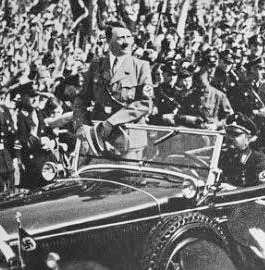Issue No.3 / Jan 1-15,2015

As someone said, the most beautiful and sophisticated technology in the world is as good — or as bad — as the men using it. What could illustrate it better than the connection between Mercedes Benz and Nazi Germany?
Even though the Mercedes Benz trademark — the three pointed star in the laurel wreath was born in 1925 — signaling the merger between Daimler-Motoren-Gesellschaft (DMG) and Benz & Cie — came much before the advent of Hitler, it was a car much-loved by the Nazi top brass.
The reasons were simple enough: the Mercedes Benz cars were German in origin and served as fabulous symbols of prosperity as promised by the Third Reich. They were also speedy and sturdy, allowing Hitler and his henchmen to campaign across Germany at a speed that left political opponents breathless. Once they seized state power, the Nazis had almost unlimited resources at their disposal, and preferred to use the Mercs to make a statement about luxury and invincibility. Several cars were custom-made for the top brass.
For instance, the Mercedes Benz-770, also known as the Großer Mercedes (large Mercedes), a luxury car built by the company from 1930 to 1943 was the preferred choice of ride for Hitler. Another massive Großer Mercedes — a six seater touring car — that belonged to Hermann Goring — has grabbed much attention.
Himmler, number two in the Nazi echelon, head of the SS and the Gestapo, was also a car lover and owned a green bulletproof Mercedes Benz as well. After the end of World War II, these two cars were put on sale by the United Nations’ International Refugee Organisation. The proceeds went to the survivors of Nazi atrocities.
The Secret Service and Gestapo — the two evil arms of Nazi Germany — especially made use of the Mercedes 260D for the hunting of the Jews. The 260 D was named in reference to its engine’s cubic capacity. Nearly 2,000 vehicles were assembled until 1940 after which, the Daimler-Benz group had to devote itself almost entirely to military manufacture.
By Kalyani Sardesai